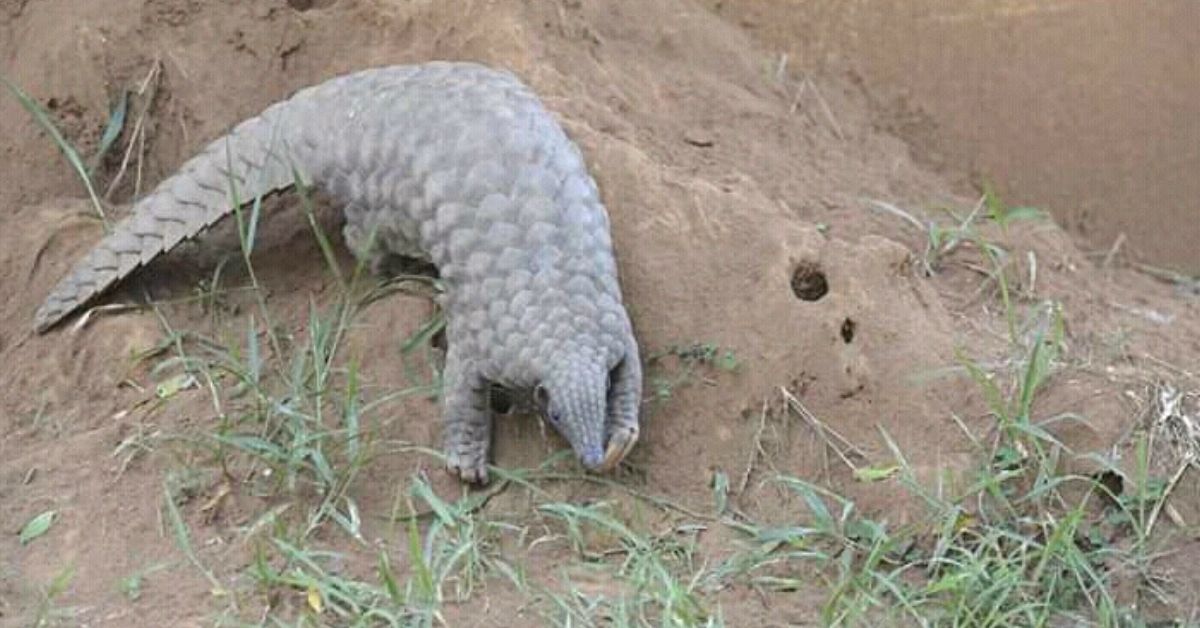Despite Threats, Forest Officer Busts Smuggling Ring of World’s Most Trafficked Animal
As a divisional forest officer, Sasmita Lenka from Odisha helped bust an international network of pangolin smugglers in Athagarh and Khunnpunni. Despite death threats and resistance from those in power, she took action against 36 smugglers and rescued five pangolins

This article is a part of The Better India’s series to highlight the work of those who have dedicated their lives to saving some of the most endangered species of plants and animals in India. This Environment Day, join us in saluting their work.
There could be a pangolin in the backpack of a person standing right next to you, and you would never know. Unlike other wild animals, these mammals, which are usually about the size of a house cat, have no teeth, and do not squeak, howl, or even attack. Despite having overlapping keratin scales across their bodies, the only defence mechanism of a pangolin is to curl into a ball when it senses danger.
Such vulnerabilities make the shy and nocturnal ant-eating animal the most trafficked animal in the world, putting it on the International Union for Conservation of Nature (IUCN) red list of threatened species. The animal has high demand in international markets for its meat, blood, and scales, which are assumed to have medicinal properties. However, very little is known about the Indian pangolin, found across the Himalayan region, predominantly in Odisha.
The state has now become notorious for pangolin smuggling, where traffickers remain in hiding and work quietly from unknown territories. But in 2019, Sasmita Lenka, a divisional forest officer, busted a racket and an active international network involved in the illegal trade.
The 47-year-old officer braved threats to her life to arrest 28 including eight smugglers, and rescued five pangolins, seized one dead one, and recovered five kilos of pangolin scales. She was responsible for all the legal action taken against the smugglers between August 2019 and April 2020 during her stint in the Athagarh and Khunpunni forest range.
Modus operandi

“There was no information on the presence of pangolins in this area, and no action by authorities had been reported with respect to the illegal trade. Not many locals knew about it. Some even thought it was a bird,” Sasmita tells The Better India.
However, she was sure of the existence of the network in the forest area, and deployed informers across the jurisdiction to receive tip-offs on such illegal activities. Within a month, she rescued a pangolin from Kharod village, and began busting other gangs. She says the case revealed the presence of an active network that had not been on the radar, probably for years. Further investigation provided deeper insight into and understanding of the network.
Describing the modus operandi of the traffickers, she says, “An agent or middleman approaches the tribal people in the area, and asks them if they know where pangolins could be found. They sometimes share photos or videos of the animal. A few locals are usually aware of the pangolin’s whereabouts, but don’t know how endangered the species are. All the information is exchanged online. These locals usually pick up the animal for the agent in exchange for a few thousand rupees. When the animal is exchanged between agents across different states, the value increases to lakhs,” she says.
Sasmita says the pangolin travels across the country through sea or land. An adult pangolin can earn upto Rs 10 lakh. Four inches of scale can fetch around Rs 10,000. “The scales are weighed in grams. Imagine what 5 kilos of seizure would cost,” she says.
An incredible feat

Sasmita says she conducted many awareness activities regarding the pangolin, its ecological value, and the threats it faces. “Pangolins are natural pest controllers of the forest, as they thrive on ants, termites and larvae. They burrow into the ground and in the process, help improve the quality of soil,” she says.
To crack down on the gangs, she offered a reward of Rs 10,000 for information about suspects. “Residents across 30 villages reached out with information. The initiative received a huge response, and we took action against several criminals based on this information,” she adds.
While she received plenty of appreciation for her efforts, Sasmita had to face many challenges and threats to her life. “Threats via phone calls became a routine. There were even instances of stone pelting at my residence. Many influential groups and people attempted to put pressure so the work would stop. But I remained undeterred,” she says.
Villagers claim they did not know about any such illegal activities, and are now ready to contribute to the conservation efforts. “A majority of locals were not aware that pangolins exist in the vicinity. Awareness about the animal and strict action taken by Sasmita helped change the people’s mindset and support the pangolin’s conservation,” says Soumya Ranjan Biswal, a conservator from Odisha.
Recently, the United Nations recognised Sasmita’s efforts and felicitated her with the Asia Environment Enforcement Awards 2020 under the ‘gender leadership’ and ‘impact’ category. “I’m glad my hard work was noticed. But the work will only stop once the threat to pangolins is mitigated and the animal is saved from extinction,” Sasmita, who is now posted as deputy conservator of forest in the Bhubaneswar district headquarters, says.
Edited by Divya Sethu
This story made me
-
97
-
121
-
89
-
167
Tell Us More
We bring stories straight from the heart of India, to inspire millions and create a wave of impact. Our positive movement is growing bigger everyday, and we would love for you to join it.
Please contribute whatever you can, every little penny helps our team in bringing you more stories that support dreams and spread hope.



















